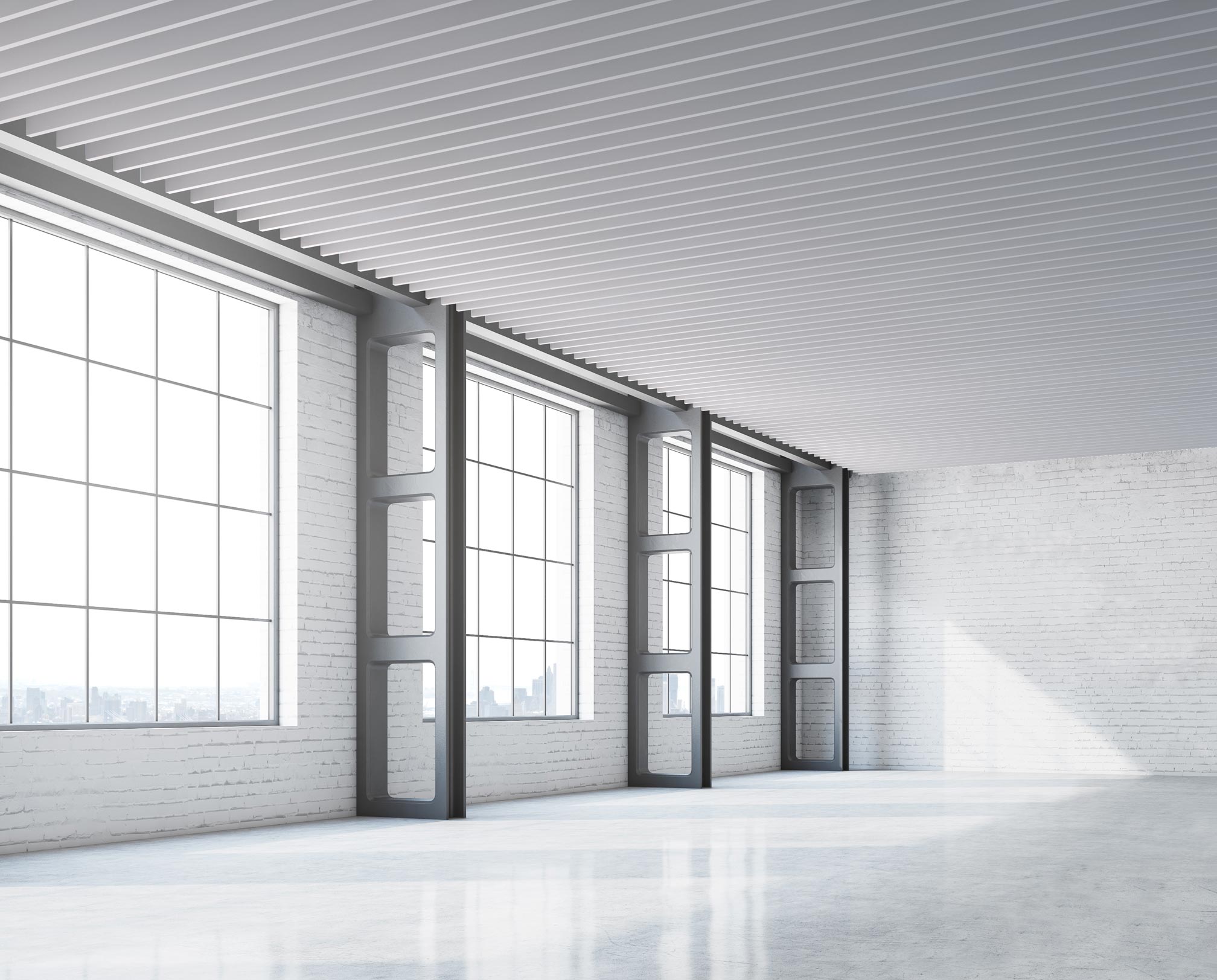
In the world of architectural design, the ceiling often becomes a blank canvas — a space that offers endless opportunities to enhance both aesthetics and functionality. Whether you're working on a commercial project, public space, or residential property, selecting the right ceiling materials is crucial. This comprehensive 8-step guide will walk you through the process of choosing the best materials to meet your project’s goals, balancing elements like sustainability, budget, performance, and aesthetic impact.

➊ Understand Your Design Goals
The first step in choosing the right ceiling material is understanding your overarching design goals. Recognising the unique requirements of each project is essential. Whether you're aiming for a minimalist, industrial look or a warm, natural feel, your ceiling material should align with both the functional and visual objectives of the space.
Consider how factors like texture, performance, and flexibility play into your design intent. For instance, a corporate office might require a sleek, professional aesthetic with superior acoustic properties, while a hotel lobby may call for more intricate detailing and a focus on luxurious materials. Think about how the space will be used, what its primary purpose is, and what kind of atmosphere you're trying to create. A well-thought-out approach will guide you in selecting materials that complement the room's function, ensure durability, and meet performance standards.
➋ Explore Material Options
Once you've outlined your design goals, the next step is to dive into the various material options available. The world of ceiling design offers a wide array of materials, each bringing different benefits to the table. Common options include:
- Aluminium: A lightweight, durable material known for its sleek, modern finish and resistance to corrosion. It's a popular choice for industrial or minimalist designs.
- Mineral Fibre: Renowned for its excellent acoustic properties, mineral fibre is commonly used in spaces like classrooms, theatres, and offices where noise control is essential.
- Metal: Metal ceilings can provide a contemporary aesthetic while offering fire resistance, durability, and ease of maintenance.
- Wood Wool: Combining acoustic performance with sustainability, wood wool is a versatile material that brings a natural, textured look to spaces.
- Timber: For those seeking to incorporate biophilic design principles, timber provides warmth and a natural aesthetic while offering flexibility in design.
Each material offers different functional and aesthetic benefits, so carefully match your options to the specific needs of the project.
➌ Consider Fire Compliance and Safety
When it comes to public spaces or buildings with stringent safety requirements, fire compliance is non-negotiable. Materials like aluminium and metal, which are non-combustible, are excellent choices for settings where fire resistance is critical. Ensure that any materials you select meet the required fire safety standards.
For materials that are more prone to combustion, like timber, it’s essential to choose appropriate coatings or treatments that enhance fire resistance. Collaborate with suppliers who understand the complexities of fire safety and can guide you toward compliant solutions without compromising design intent.

➍ Evaluate Acoustic Properties
Acoustics play a pivotal role in ceiling design, particularly in environments like open offices, auditoriums, and community spaces where sound control is vital. Materials such as mineral fibre and wood wool are celebrated for their sound-absorbing qualities, helping to minimise noise and create comfortable spaces.
When assessing materials for acoustic performance, consider the noise reduction coefficient (NRC) and how well the material absorbs sound across different frequencies. In areas where speech clarity is important, like conference rooms or lecture halls, selecting a material with high acoustic ratings is essential to achieving optimal sound performance.
➎ Assess Aesthetic Impact
The materiality of a ceiling greatly influences the visual appeal of a space. Timber, for example, can bring warmth and a natural, organic feel to your design, making it perfect for hospitality or residential settings. On the other hand, metal ceilings can deliver a sleek, modern aesthetic, adding a sense of sophistication and refinement to corporate or industrial interiors.
When evaluating the aesthetic impact, think about how different materials will interact with lighting, the surrounding architecture, and the overall design palette. For instance, timber battens can create a sense of rhythm and texture, while perforated metal panels can introduce patterns and dynamic visual interest.

➏ Focus on Detailing and Customisation
The small details can turn a good design into a great one, and this is particularly true when it comes to ceilings. Consider how the material you choose can be customised to enhance the design’s creativity. Whether it's using bespoke metal panels with intricate perforations or combining timber battens with concealed lighting, attention to detailing is key.
Customisation allows you to integrate functional elements such as lighting, air vents, or even acoustic solutions in a way that aligns with the design aesthetic. A well-detailed ceiling can elevate the overall atmosphere of a space, making it memorable and impactful.
➐ Balance Budget with Quality
Cost is always an important factor in material selection, but it’s vital to balance budget constraints with long-term quality. While some materials may have a higher initial cost, their durability and low maintenance requirements can lead to savings over time.
For example, while metal ceilings may come with a higher upfront cost compared to other materials, their longevity, ease of installation, and resistance to environmental factors like moisture make them a cost-effective choice in the long run. Weigh the material’s lifespan, maintenance needs, and replacement costs against the initial investment to make an informed decision.
➑ Consult with Experts
Ceiling design is a specialised area that benefits greatly from expert input. Partnering with experienced professionals who understand the intricacies of materials, installation, and compliance can make all the difference in achieving a successful outcome.
Architectural system specialists can provide tailored advice on innovative solutions, help you navigate fire compliance regulations, and assist in integrating architectural elements like lighting or acoustic systems. They can also recommend the best suppliers and installers to ensure that your design vision is executed seamlessly.

Choosing the right materials for ceiling design is a nuanced process that involves balancing aesthetics, functionality, and budget. By following this 8-step guide — understanding your design goals, exploring material options, considering fire safety, evaluating acoustic properties, focusing on aesthetics, and more — you can create a ceiling that not only enhances the space but also aligns with the broader architectural vision.
As ceiling design continues to evolve, the importance of materiality remains at the forefront of creating spaces that are sustainable, aesthetically pleasing, and high-performing. For your next project, ensure you're making informed choices by consulting with experts and keeping sustainability, quality, and creative detailing in mind.
Book a call with our architectural team today to get down into the detail. We are happy to chat through ideas, materiality and budget to find out how we can help you create the interiors you need. Simply drop us a note on hello@mbsarchitectural.com.au or call us on 03 9580 7800 to chat with our specification team.
Every material.one source.
Let's bring your project to life.










































